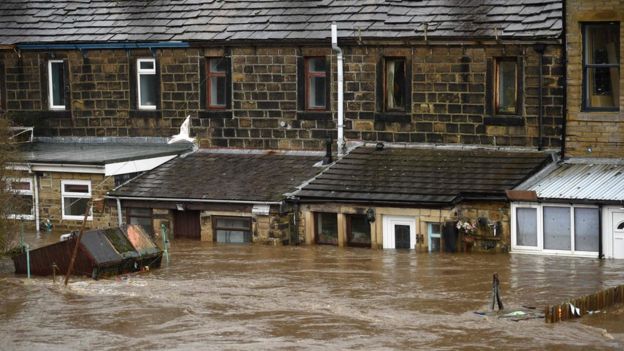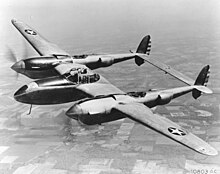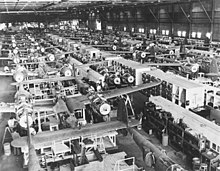Storm Ciara helps plane beat transatlantic flight record
Source: BBC
Experts are hailing a British Airways flight as the fastest subsonic New York to London journey.
The Boeing 747-436 reached speeds of 825 mph (1,327 km/h) as it rode a jet stream accelerated by Storm Ciara.
The four hours and 56 minutes flight arrived at Heathrow Airport 80 minutes ahead of schedule on Sunday morning.
According to Flightradar24, an online flight tracking service, it beat a previous five hours 13 minutes record held by Norwegian.
Read more: https://www.bbc.com/news/uk-england-london-51433720
Travel cancellations, power cuts and areas of flooding from Storm Ciara are wreaking havoc across northwestern Europe as Storm Ciara sweeps through the region on Sunday.
The name Ciara was given to the storm on Wednesday by the UK Met Office. In Germany the storm is know as Sabine.
Winds increased as rain arrived across Northern Ireland, Scotland and Northern England throughout the day on Saturday.
Strong winds and rainy spells spread across all of the United Kingdom on Saturday night as Ciara continued to approach.
https://www.accuweather.com/en/severe-weather/storm-ciara-to-target-uk-this-weekend-may-be-biggest-of-season/675089
Dennis Donovan
(18,770 posts)Its *actual air speed* is normal cruising, helped with one hell of a tailwind!
Sapient Donkey
(1,568 posts)I need to read up on how that works.
*Probably should have read the article for at least a little explanation... I'm such a typical 2020er
Dennis Donovan
(18,770 posts)The speed of sound @ sea level is approx 768 mph/667 kts (it decreases with altitude). But, as far as the 747 knows, it's going whatever its IAS (indicated air speed) shows. Their "cruise" air speed likely never went past what they normally cruise at (approx 580 mph / 505 kts). Hope this helps! ![]()
patphil
(6,182 posts)But the aircraft was not breaking the speed of sound within the mass of quickly moving air.
Thus it was a subsonic flight...no sound barriers were actually broken.
Bernardo de La Paz
(49,007 posts)Major Nikon
(36,827 posts)Ferrets are Cool
(21,107 posts)
They are crowing about a new transatlantic flight record????? Sheesh
OnDoutside
(19,962 posts)OnDoutside
(19,962 posts)seriously dodgy ! It landed on its right wheel, seemed to hover in the air until the left wheel finally touched down. My flight normally takes about an hour or so but we were landed in 45 minutes.
Blue_Tires
(55,445 posts)iluvtennis
(19,863 posts)W T F
(1,148 posts)BlueMTexpat
(15,369 posts)full throes of Storm Clara (aka Storm Sabine in German-speaking Switzerland) here. But for those of us in the Geneva area, it's not been as bad as elsewhere, and for me personally, not as bad as expected.
https://www.thelocal.ch/20200210/how-winter-storm-ciara-is-affecting-switzerland
Just to be safe, I brought the smaller tables and all chairs on my terrace inside and moved heavier furniture to the most sheltered areas. But the wind here hasn't seemed as strong as it was a week ago with Storm Petra.
Thank heavens that I'm retired, don't have to travel right now, and can simply cocoon with plenty of tea, hot chocolate, good books and TV. Thank heavens also that there's no flooding in this area. But oh, do I feel for those who are in affected areas! ![]()
![]()
mahatmakanejeeves
(57,490 posts)It did make two refueling stops. The time for the refueling stops is excluded. Also, it crashed near Mitchell Field.
I hadn't known that their development went that far back.
{snip}
Design and development
Lockheed designed the P-38 in response to a February 1937 specification from the United States Army Air Corps (USAAC). Circular Proposal X-608 was a set of aircraft performance goals authored by First Lieutenants Benjamin S. Kelsey and Gordon P. Saville for a twin-engine, high-altitude "interceptor" having "the tactical mission of interception and attack of hostile aircraft at high altitude." In 1937, Kelsey recalled he and Saville drew up the specification using the word interceptor as a way to bypass the inflexible Army Air Corps requirement for pursuit aircraft to carry no more than 500 lb (230 kg) of armament including ammunition, as well as the restriction of single-seat aircraft to one engine. Kelsey was looking for a minimum of 1,000 lb (450 kg) of armament. Kelsey and Saville aimed to get a more capable fighter, better at dog-fighting and at high-altitude combat. Specifications called for a maximum airspeed of at least 360 mph (580 km/h) at altitude, and a climb to 20,000 ft (6,100 m) within six minutes, the toughest set of specifications USAAC had ever presented. The unbuilt Vultee XP1015 was designed to the same requirement, but was not advanced enough to merit further investigation. A similar single-engine proposal was issued at the same time, Circular Proposal X-609, in response to which the Bell P-39 Airacobra was designed. Both proposals required liquid-cooled Allison V-1710 engines with turbo-superchargers and gave extra points for tricycle landing gear.
{snip}
XP-38 and YP-38 prototypes
Lockheed won the competition on 23 June 1937 with its Model 22 and was contracted to build a prototype XP-38 for US$163,000, though Lockheed's own costs on the prototype would add up to US$761,000. Construction began in July 1938, and the XP-38 first flew on 27 January 1939 at the hands of Ben Kelsey.

One of 13 YP-38s constructed
Kelsey then proposed a speed dash to Wright Field on 11 February 1939 to relocate the aircraft for further testing. General Henry "Hap" Arnold, commander of the USAAC, approved of the record attempt and recommended a cross-country flight to New York. The flight set a speed record by flying from California to New York in seven hours and two minutes, not counting two refueling stops, but the aircraft was downed by carburetor icing short of the Mitchel Field runway in Hempstead, New York, and was wrecked. However, on the basis of the record flight, the Air Corps ordered 13 YP-38s on 27 April 1939 for US$134,284 each. (The "Y" in "YP" was the USAAC's designation for a prototype, while the "X" in "XP" was for experimental.) Lockheed's Chief test pilot Tony LeVier angrily characterized the accident as an unnecessary publicity stunt, but according to Kelsey, the loss of the prototype, rather than hampering the program, sped the process by cutting short the initial test series. The success of the aircraft design contributed to Kelsey's promotion to captain in May 1939.

Mechanized P-38 assembly lines in Burbank, California. Planes start at the back of the building on the far right (without wings, so that section of the line is narrower). When they reach the end of that line, they shift to the center line, gain wings, and move backward down this line. Upon reaching the end, they are then shifted to the line at the left, and progress forward to the end of the line.
Manufacture of YP-38s fell behind schedule, at least partly because of the need for mass-production suitability making them substantially different in construction from the prototype. Another factor was the sudden required expansion of Lockheed's facility in Burbank, taking it from a specialized civilian firm dealing with small orders to a large government defense contractor making Venturas, Harpoons, Lodestars, Hudsons, and designing the Constellation for TWA. The first YP-38 was not completed until September 1940, with its maiden flight on 17 September. The 13th and final YP-38 was delivered to the Air Corps in June 1941; 12 aircraft were retained for flight testing and one for destructive stress testing. The YPs were substantially redesigned and differed greatly in detail from the hand-built XP-38. They were lighter and included changes in engine fit. The propeller rotation was reversed, with the blades spinning outward (away from the cockpit) at the top of their arc, rather than inward as before. This improved the aircraft's stability as a gunnery platform.
{snip}